I never knew I had dated someone with a dismissive-avoidant attachment style, until recently. When I was 21 years old, my boyfriend used to confound me with his behavior. At times, he was loving and attentive, going out of his way to make me feel cared for, making plans for our future, and indicating in all sorts of ways that I was ‘the one.’ Then he would suddenly distance himself. He rarely picked up my calls, citing being busy. When we did meet, he was cold and unapproachable. It was like dating a stranger.
Am I needy, or is he emotionally unavailable? I would ask myself all the time. Our relationship fizzled out but not before causing some real damage to my self-esteem and confidence. With all the new information and research at our disposal, it’s become clear that I was dating an individual with classic dismissive-avoidant attachment behavior.
Dr. Shefali Batra (MD in Psychiatry), a California-based psychiatrist and cognitive behavior therapist, who specializes in counseling for separation and divorce, breakup and dating, and premarital compatibility issues, shares that a person with dismissive-avoidant attachment “avoids emotional connection and stays away from emotional dependence.” To understand that, we need to learn about attachment trauma in adults. Let me tell you all about it.
What Causes Attachment Styles?
Table of Contents
Way back in the 1950s, John Bowlby, a British psychologist, proposed a revolutionary concept about attachment. His theory proposed that all children are born with an innate requirement to attach themselves to others in order to survive. In the 1970s, psychologist Mary Ainsworth took this concept a step further and proposed the attachment theory that we know and use today.
According to her, there are distinct styles regarding how people attach to others, depending on their relationship in early childhood with their primary caregiver. Children might be categorized as having either secure or insecure attachment styles. Insecure attachment disorder includes the following styles:
- Anxious attachment
- Dismissive-avoidant attachment
- Fearful-avoidant attachment
Dr. Gaurav Deka (MBBS, PG Diploma in Psychotherapy and Hypnosis), an internationally acclaimed Transpersonal Regression Therapist and mental health and wellness expert who specializes in trauma resolution, says, “These attachment styles are a sum total of your earliest experiences with love, care, and nurturing.”
Related Reading: Trauma Bonding: Why People Stay In Abusive Relationships
Effects of insecure attachment styles on relationships — According to experts
Let’s talk about how childhood trauma affects adulthood relationships. By understanding the way adults attach and connect with others, one can take steps toward creating healthier and more fulfilling relationships. Here, we’ll discuss some of the effects of insecure attachment styles on romantic relationships, as stated by studies and experts.
- Dr. Deka discusses the correlation between childhood trauma and adult relationships, “The way your parents made you feel as a child goes on to govern how you interact with and react to intimate connections as adults.”
- A study by Bartholomew and Horowitz states that “the experience a person has with their caregiver in childhood would lead to the expectations of the same experiences in later relationships with romantic partners.”
- According to our expert of the day, Dr. Batra, “A dismissive and avoidant personality style makes it very hard for the partner to stick with them. The partner is often confused about what they’re supposed to be doing. If the individual and the partner are aware of this personality style, then they can put in the effort to consciously work toward healthier interpersonal interactions. If the dismissive-avoidant pattern continues, the relationship becomes toxic.”
- Psychotherapist Dr. Aman Bhonsle (Ph.D., PGDTA), who specializes in relationship counseling and Rational Emotive Behavior Therapy, classifies the anxious-ambivalent attachment style as “a classic case of the clingy, anxious, and doubtful lovers. Such partners had ambivalent parents themselves, who probably couldn’t fill the role of a complete parent.”
- High anxiety levels and an obsession with creating “close” romantic relationships are how an anxious-avoidant approaches personal relationships. You may recognize these patterns in clingy couples where you try to figure out the difference between unhealthy emotional attachment vs love. These could be signs of detachment disorder in adults and can come along with anger issues, trust issues, and attachment issues
- There might be differences in fearful vs dismissive-avoidant styles, but the biggest similarity is that they usually have some form of trauma dating back to their childhood. Their caregivers may have been inconsistent in their relationships and, as a result, the person develops a confusing mix of craving intimacy and avoiding romantic relationships. Can a fearful avoidant fall in love? It is not impossible, but it requires work and effort from both partners
- Clearly, early attachment patterns determine the types of reassurance in a relationship that you require, and your secure and insecure attachment style
While it is not as simple as saying a bad childhood affects relationships, there is a vital element of truth in these theories. For example, if your parents were secure, loving individuals who gave you the time and attention you required, the odds are you will have grown up into a trusting, securely attached adult with high self-esteem, a strong sense of security, and you can love easily. On the other hand, if you were raised in a household with inconsistent communication in a relationship and inconsistent attention, you may develop a fear of abandonment.
What causes dismissive-avoidant attachment?
What causes dismissive-avoidant attachment or detachment disorder in adults? You may have been raised in a space where your independence was insisted upon during early childhood development. Even from a young age, you were taught to suppress your instinct to ask for help and, as a result, grew up self-reliant, avoiding intimacy, and afraid of exhibiting any vulnerability. Parents of avoidant-attachment children usually minimize the need for connections, whether through physical touch or emotional vulnerability.
Such children learn to ‘turn off’ their needs (or at least try to), but the human need for connection and its denial forms an integral part of their development and social interactions. As a coping mechanism, they may redirect their attention to other tasks and bury the need for their parent’s time, attention, and love. They develop a strong sense of self-sufficiency and learn not to rely on others. This forced independence and emotional intelligence carries on into adulthood and subsequent romantic relationships. The focus in such adults lies squarely on themselves, and as a result, they may not be able to read social and personal relationships well or adjust to their partner’s needs.
What Is Dismissive-Avoidant Attachment Style?
So, what is dismissive-avoidant attachment (or avoidant attachment as it is often referred to)? Simply put, people with this type of toxic attachment style are overly independent and may have difficulties developing long-term, meaningful, and intimate relationships. Exhibit A: My ex-boyfriend! Dr. Batra adds, “Typical characteristics of the dismissive-avoidant attachment style are:
- They do not rely on their partner
- They tell their partner not to rely on them
- They avoid forming an emotional connection
- They dismiss the emotional connection from their partner as well
Yet, they don’t want the relationship to break apart. They just don’t want emotional dependence and connection. This makes it very hard for their partner.”
Dr. Deka adds, “The avoidant-dismissive attachment style offers a clear glimpse into how closely adverse childhood experiences and relationships are connected. A person with this attachment style finds it hard to cope with emotional intimacy. They prioritize their freedom and independence above all else, and, therefore, can quickly feel stifled when intimacy or closeness takes hold in their relationships. These people often get accused of being emotionally distant by their partners. Owing to the sense of unease that comes from a feeling of closeness, avoidant-dismissive people tend to push their partners away, lie to them, have affairs, or even end their relationships just to reclaim the sense of independence they’re accustomed to.”
Related Reading: Emotional Baggage – Causes, Signs, And Ways To Cope
Characteristics of people with dismissive-avoidant attachment style
Dismissive-avoidant attachment types are actually pretty easy to spot. This quick checklist of characteristics can change with time but usually includes the following:
- People with this attachment style prefer to be alone and self-sufficient and keep people at arm’s length
- They tend to feel uncomfortable in close relationships
- They avoid situations and fulfilling relationships that are overly emotional or intimate
- They do not regard romantic partners as necessary and prefer casual flings and short relationships
- They avoid conflicts or disagreements and prefer to remove themselves from the situation
- They are not interested in what others think or feel and rarely make a conscious effort to find out
- They avoid commitment (of any form)
- They fear being controlled
- They rarely express their emotions/fears /anxieties and have poor communication skills
According to attachment researchers, Fraley and Brumbaugh, adults with dismissive-avoidant attachment styles may actively choose not to get involved in close relationships in a preemptive way of protecting themselves from rejection or conflict. They may also suppress memories of negative events and find it difficult to express their own feelings and interests. All these traits serve to complicate interpersonal relationships and would require a significant amount of self-awareness and sensitivity to overcome.
8 Signs You Have A Dismissive-Avoidant Attachment Style
Let’s discuss the 8 common signs of people with dismissive-avoidant attachment styles that may appear in early adulthood. It is important to note that a dismissive-avoidant man may not necessarily exhibit all of these traits all of the time, or a dismissive-avoidant woman’s traits won’t always tick all these boxes. See if you relate to any of these:
1. You have high levels of intimacy avoidance
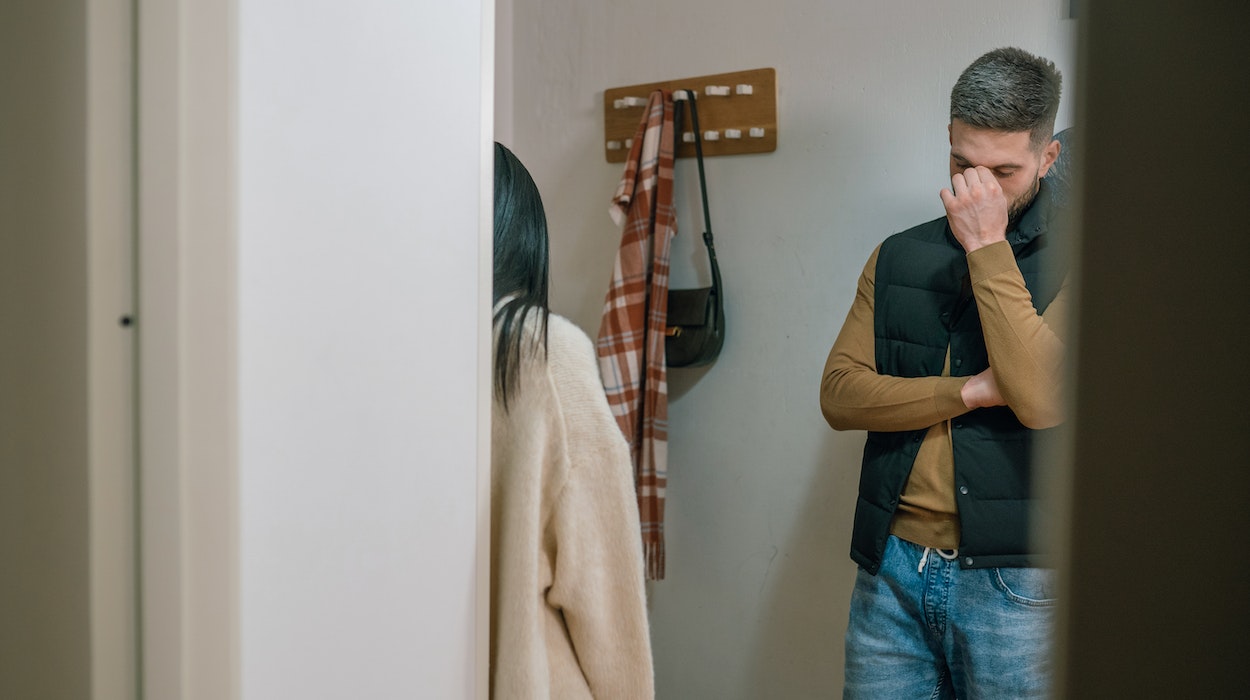
The closer people get, the more the dismissive-avoidant will disengage from the emotional closeness and move away from the relationship. Emotional intimacy causes high levels of discomfort. People with this type of attachment style usually lose interest the deeper the relationship becomes and then tend to avoid intimacy.
Then why do dismissive-avoidants come back? When their partners move away emotionally, dismissive-avoidants tend to return and focus their attention once again on the relationship.
2. You have had a series of short, shallow relationships or casual flings
The low stakes in casual relationships or flings allow the dismissive-avoidant to indulge in intimacy but on their own terms. Since these types of shallow relationships rarely develop into anything more profound, the stakes are low and in keeping with the person’s avoidance of obligations and closeness.
3. You’re known for your self-reliance
People who are dismissive-avoidant tend to take independence to extremes. They may refuse to rely on others to fulfill their needs and find it difficult to ask for help. Since they only rely on themselves, the dismissive-avoidant attachment style is characterized by a personality that is overly confident and self-reliant.
They have a keen sense of who they are, what they like, and dislike, and their life goals. In the case of non-romantic, personal relationships, they are considered ‘low-maintenance’ and rarely need much from others. On the flip side, this may lead to many superficial relationships.
4. Your inability to share feelings is one of the signs you have a dismissive-avoidant attachment style
Dismissive-avoidant people find it challenging to connect with others and avoid an emotional connection. They do not open up in close relationships and keep their feelings close to themselves. This, in turn, makes developing lasting relationships tricky. The emotional distance confuses and hurts the Partners of dismissive-avoidant people.
Related Reading: 7 Reasons You Lose Feelings For Someone Fast
5. Your attention and affection toward your partner remain inconsistent
The biggest complaint from partners of dismissive-avoidant adults is the unpredictability of affection. The relationship can swing from regular attention to neglect very quickly. These inconsistent patterns play out throughout the course of a relationship and could be considered a type of abusive behavior.
6. Fault finding and nitpicking are your go-to actions
An avoidant-attachment personality will nitpick or find fault in their partner in an unconscious attempt to sabotage a relationship. Suddenly, their partner’s habits or appearance becomes a cause for concern and a convenient reason for a breakup. The demand for security is a massive trigger for this personality type, leading to a strong urge to escape.
7. You hate conflict
People with an avoidant-attachment style tend to escape relationships because they expect to be abandoned when a situation gets challenging, or when conflict is imminent. In a bid to preempt this rejection, they withdraw from the situation and avoid the source of conflict entirely.
8. If you resist vulnerability and openness in relationships, it’s another sign you’re a dismissive-avoidant
People with a dismissive-avoidant style tend to judge others when they express feelings openly or show any hints of vulnerability. This distrust of others being human leads to being labeled as narcissists who rarely think well of others (but do have an inordinately high regard for themselves).
What triggers dismissive-avoidant behavior?

The following triggers can cause a dismissive-avoidant to retreat and escape or pretend that the relationship does not exist:
- Any relationship or situation where they feel out of control
- Unpredictable situations
- Arguments or conflicts
- Criticism and judgment of others
- Dependency and vulnerability of others
- When their partner is demanding their time or attention
Related Reading: How To Get An Avoidant To Chase And Miss You
How To Overcome And Form Secure Attachments
If you feel that you exhibit the traits of a dismissive-avoidant and you want to have a profound and successful romantic relationship (or better connections with others), there are definite steps you can take toward recovery. However, it is not always a case of how to fix dismissive-avoidant attachment behavior patterns. And developing a secure attachment style does not mean that you won’t face problems in your meaningful relationships. However, you will be equipped with the tools required to deal with them in a healthy fashion.
How to treat dismissive-avoidant attachment behavior
In a study by Simpson and Rholes, Adult Attachment, Stress, and Romantic Relationships, there are tips on how to treat dismissive-avoidant attachment behavior. It states, “When dealing with stressful events, highly avoidant individuals may not be fully aware they are upset, and they (tend to) neither want nor seek help from their partners. In light of their negative, cynical working models, avoidant individuals (will) be motivated to reduce or contain any distress they feel by being self-reliant, which allows them to reestablish independence, autonomy, and personal control.
“Consequently, avoidant individuals display attachment behaviors that permit some contact with their partners, but at a safe, emotionally comfortable distance and on terms they dictate.” Here are some ways to overcome this behavior and form secure attachments:
1. If you’re looking to heal your insecure attachment style, start by improving communication with others
Whether it’s with your significant other or your family and loved ones, being more open about your feelings in the present moment and accepting the needs and desires of others is essential. Close relationships flourish when a safe space to communicate is present. Be honest about how you feel and be open when listening to others. Even in situations where there are two avoidants in a relationship, opening communication channels can go a long way.
2. Challenge your usual responses
Being aware of your responses is the first step toward changing them. Small steps such as saying yes when you would say no, or agreeing to talk things out rather than removing yourself from conflict are all ways to make an effort with your partner.
3. Be mindful
Focus on the present instead of dwelling on the past or imagining the future. Journal, self-reflect, and work toward accepting your emotions. All this will help you tolerate situations that may be beyond your control and other potential triggers.
Related Reading: Making Peace With Your Past – 13 Wise Tips
4. Ask for help
The best thing you can do is look for a long-term solution toward recovery. This would entail finding a professional therapist to hold your hand and call out your behavior patterns. Change is always uncomfortable, and it helps to have an ally in your corner, rooting for you through this journey.
5. Work on self-regulation
The way you manage your own emotions and actions can help with triggering events. You can do this by:
- Working against your usual response to repress emotions
- Talking about your feelings with loved ones
- Building trust in others slowly
- Depending on others bit by bit
- Asking for help
- Taking personal space when you need it
- Working on your inner critic
- Letting yourself make mistakes and forgiving yourself for them
Dr Deka says, “So, a person may see having an emotionally unavailable partner as their biggest problem, when, in fact, they should focus on why they attracted such a partner in the first place. Getting to the root of parental influence on relationships is the key to working through any and all issues you may have. Without it, any fix would be superficial at best. Sooner or later, you and your partner will fall into your old patterns and tendencies.”

How to deal with dismissive-avoidant attachment in your significant other
Dr. Batra has the following suggestions regarding how to deal with dismissive-avoidant attachment, “I would give the following practical advice to the partner of a person with a dismissive-avoidant personality.
- Educate yourself about this condition. The first step is to recognize the signs. The second is knowing that you cannot wonder how to fix dismissive-avoidant attachment as it is not a problem that can be ‘cured’
- Do not keep giving in just because you love the person. Charity, after all, begins at home
- Be self-aware so that the next step is for you to set boundaries
- Explain to your partner what their behavior is doing to your relationship and its impact on you personally
- Let your partner know that you’re there for them and that they can trust you
- It is very important that the aware partner realizes this and tries to nudge the partner with the dysfunctional style toward seeking the appropriate treatment for attachment issues in adults
If your partner exhibits the traits of this type of attachment style, you must know that there is hope. While the road ahead may not be the easiest, the good news is that change can happen. If the person concerned wants to change, this attachment style can evolve into a more secure style with practice and genuine effort. If you are the affected partner, you must keep the following in mind:
1. Speak to a professional
Understand that the process of healing and change can be more straightforward with professional help. You may be too close to the situation to offer unbiased opinions and suggestions. A therapist or counselor will help the dismissive-avoidant to understand their past and recognize behavioral patterns.
You can also seek support and answer your own questions, such as how to become less attached to someone with this attachment style, how your attachment style impacts your relationship, or how to heal your attachment style first. Just so you know, skilled and licensed counselors on Bonobology’s panel are always here for you.

2. Understand that there will be conflict
The closer you get to your dismissive-avoidant partner, the more they will want to escape. You must reassure them about your relationship that you are going nowhere and assuage their fears of abandonment. Expect periods of withdrawal interspersed with affection, but it will be up to you to stay steady through it all and offer a safe space for them to share their emotions (without recrimination). Setting boundaries with an avoidant is also a crucial facet of recovery.
3. Positive affirmations
Don’t groan. It’s true. Listen, the road to recovery and security will not be pretty, and both of you need all the help you can get. Increasing the positive vibes and developing a practice of mindfulness and affirmations may help improve your connection as a couple. Additionally, the urge to judge and criticize others reduces significantly when acceptance and positivity enter the equation.
Related Reading: 9 Ways To Deal With Relationship Anxiety – Tips From Experts
4. Accept that this is NOT about you
In the journey toward accepting your partner and all their struggles, it is essential to remind yourself that none of this is about you or what you do. At the end of the day, your dismissive-avoidant partner is battling their own demons on the road to their recovery. Leaving an avoidant partner may be your only hope at security. But if you decide to stay, be patient and do not judge.
Key Pointers
- Dismissive-avoidant attachment is one of four attachment styles found in interpersonal relationships, including a secure relationship style
- People with this insecure attachment disorder avoid emotional connection and stay away from emotional dependence due to childhood trauma
- The four characteristics of a negative relationship with a dismissive-avoidant person are: Abusive behavior, neglect, poor communication, and lack of intimacy
- It can heal your insecure attachment style but will require tons of self-reflection, internal work, and support. Acceptance and recognition of these behavior patterns is the first step toward developing a secure attachment style
- It is recommended that you contact a therapist who could identify attachment styles in adults and help you heal your dismissive-avoidant behavior
- If you’re the affected partner, it’s important for you to draw boundaries, explain to them how their behavior affects you, and be there for them completely. But please remember to take care of your own mental health first
Everyone deserves to be loved and to be in a loving relationship. Meaningful and healthy interpersonal connections are definitely things to aspire to and work toward. While maladaptive dismissive-avoidant behavior will be difficult to overcome, learning about these different attachment styles, what causes them, and how to heal can create more fulfilling lives.
FAQS
Dismissive-avoidant attachment is one of the three attachment issues in adults. It is characterized by a strong sense of self-reliance and the inability to form long-lasting, close relationships.
Of course, it is possible. Needless to say, this will depend on how deep the childhood trauma that created this avoidant style is, but it is possible. Accepting the situation and working toward recovery can lead to fulfilling relationships. It may be harder for such types of attachment styles to show emotion, but it is not impossible.
What Is Disorganized Attachment Style In Relationships? Causes And Signs
Insecure Attachment Style In Relationships: Causes & How To Overcome
Your contribution does not constitute a charitable donation. It will allow Bonobology to continue bringing you new and up-to-date information in our pursuit of helping anyone in the world to learn how to do anything.

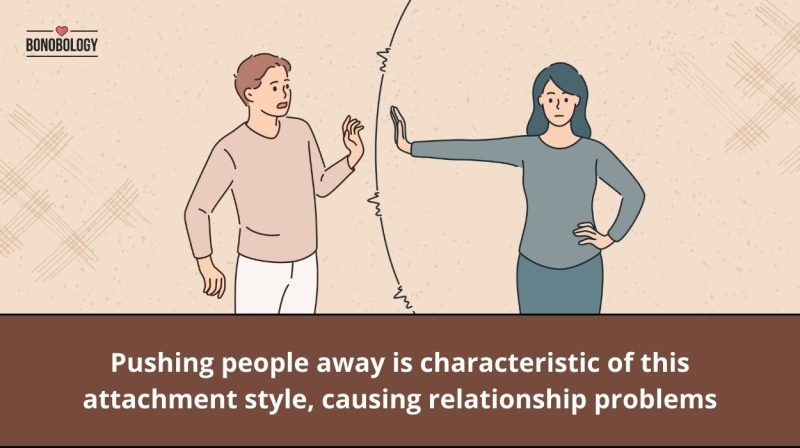

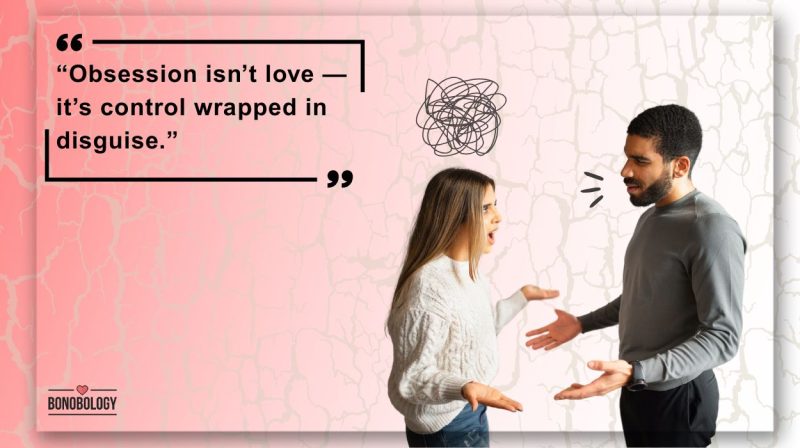
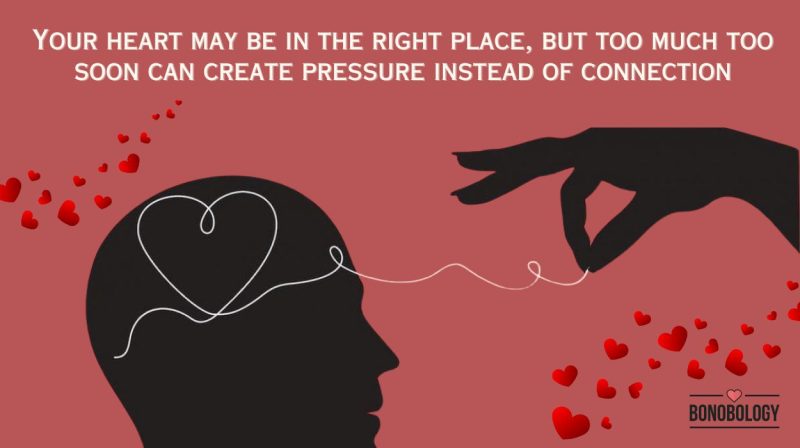
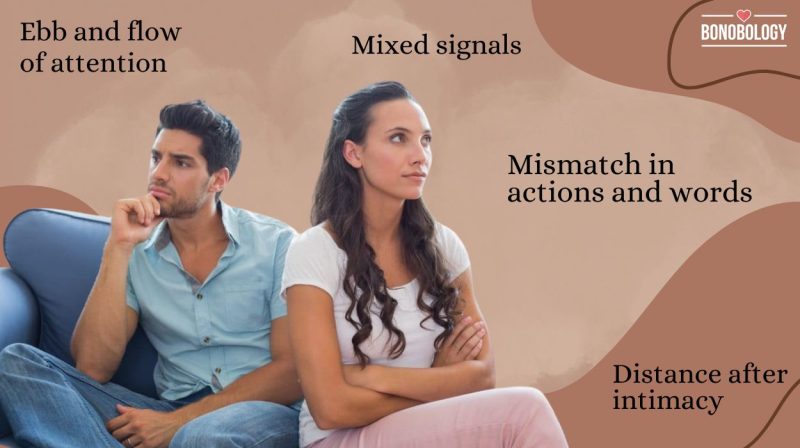
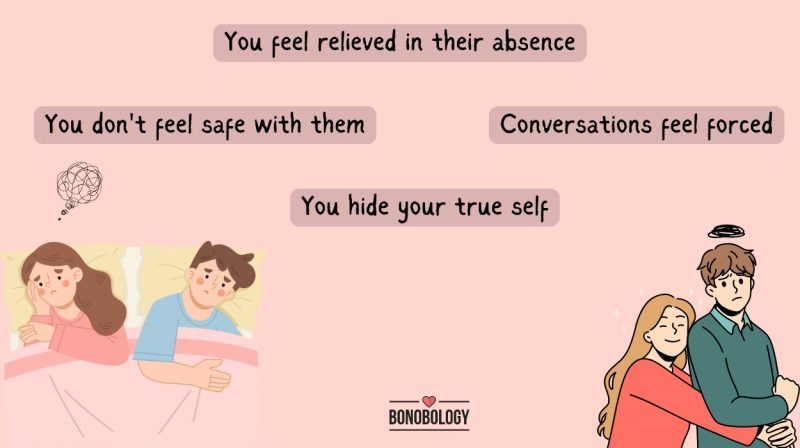
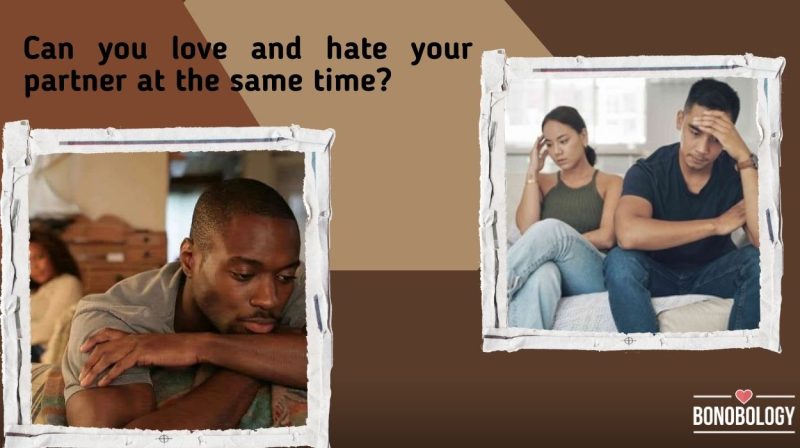

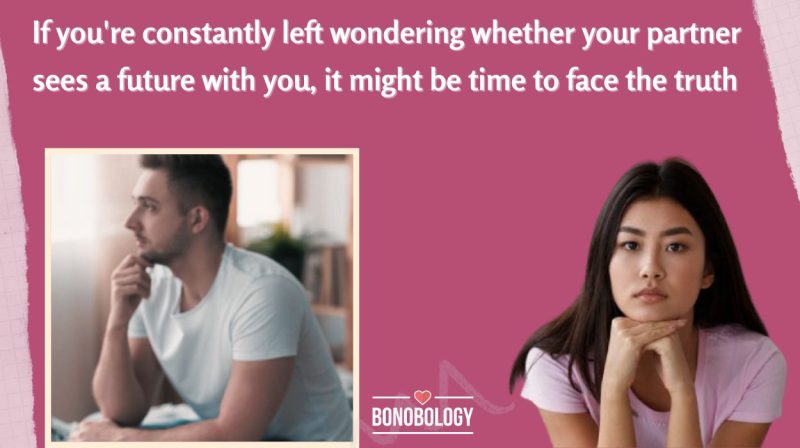
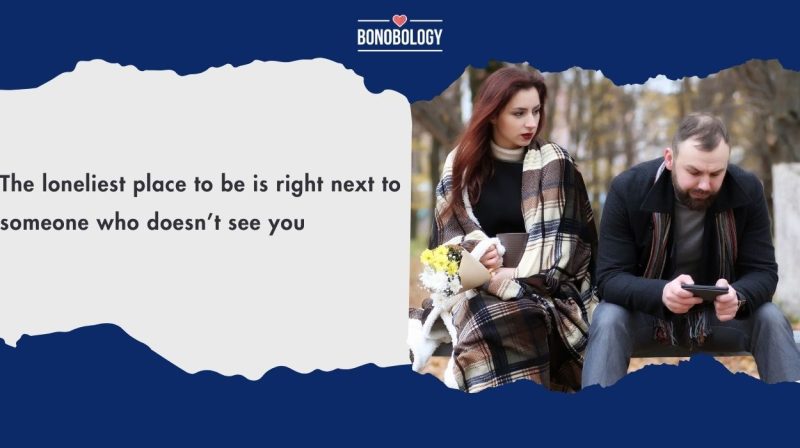
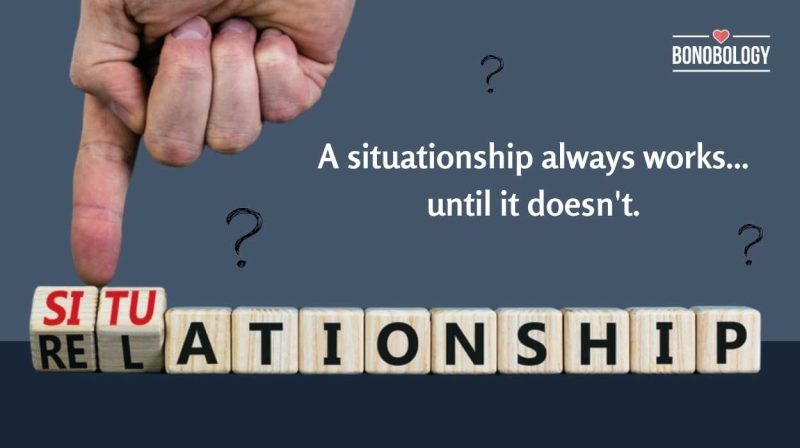
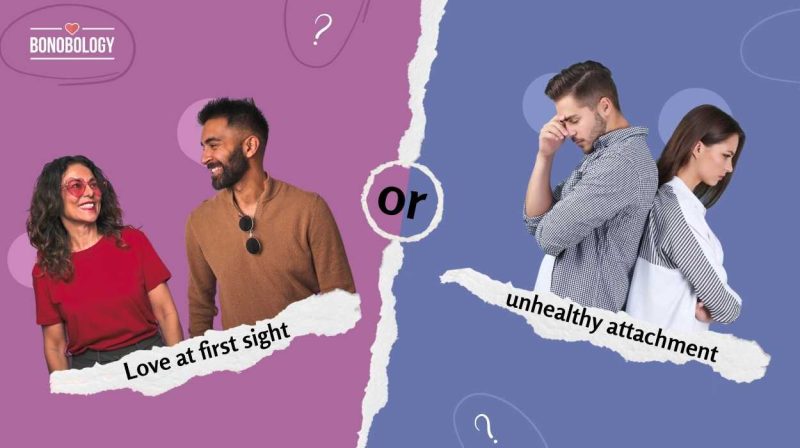
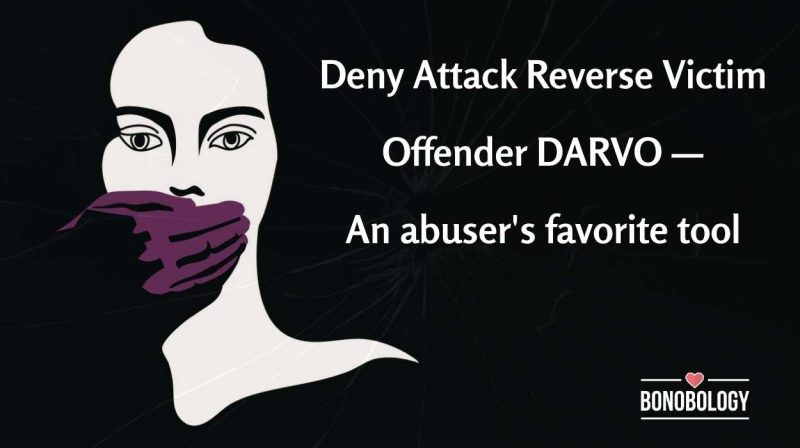

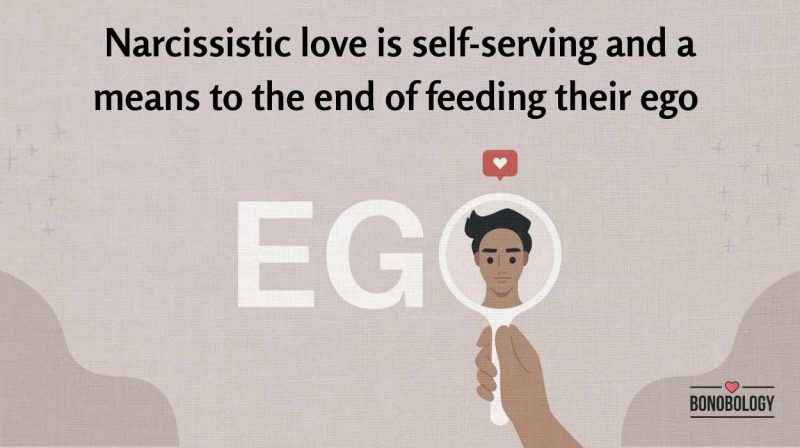
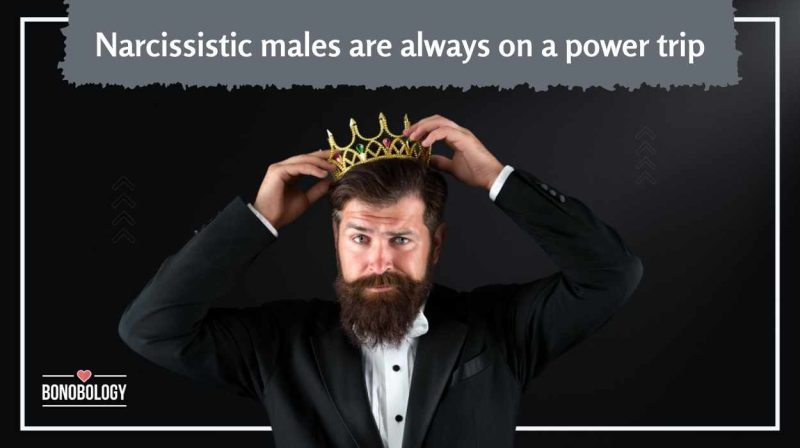
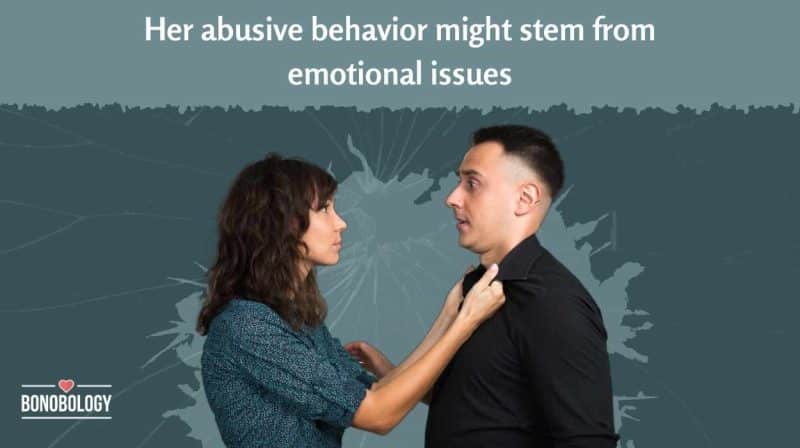
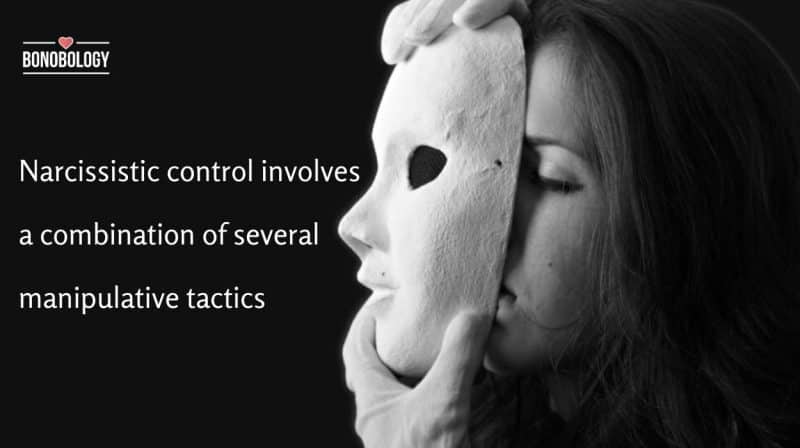
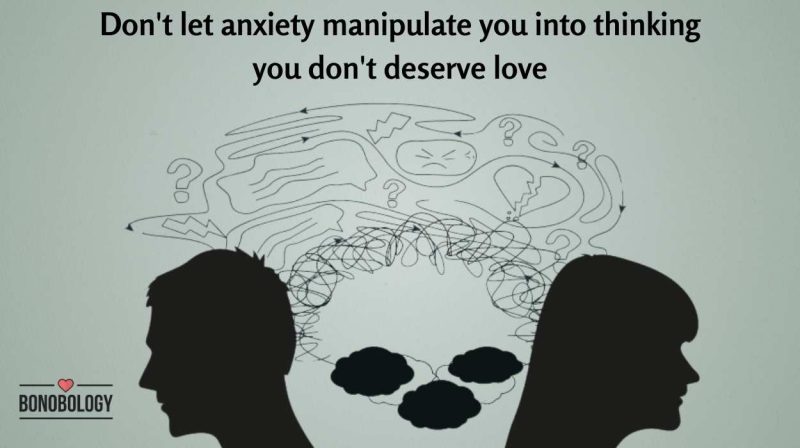
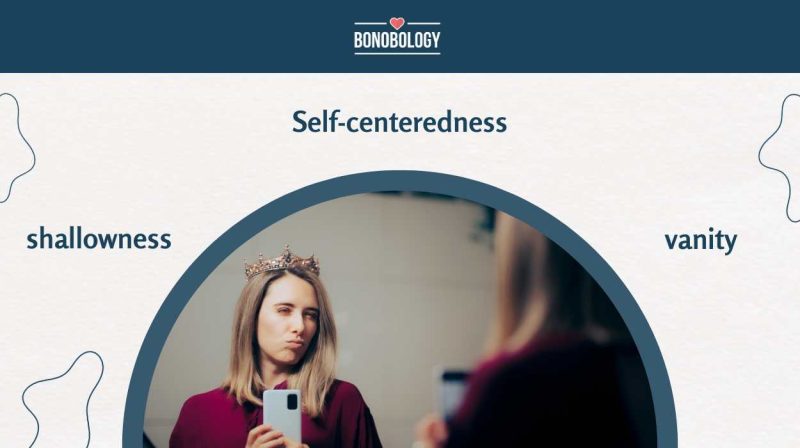
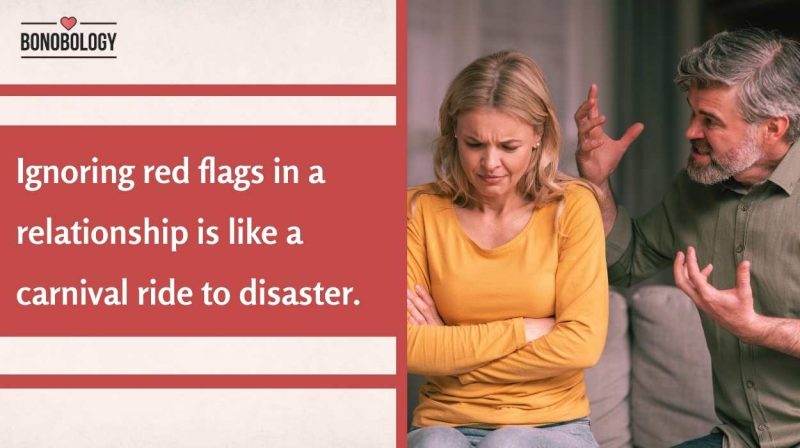
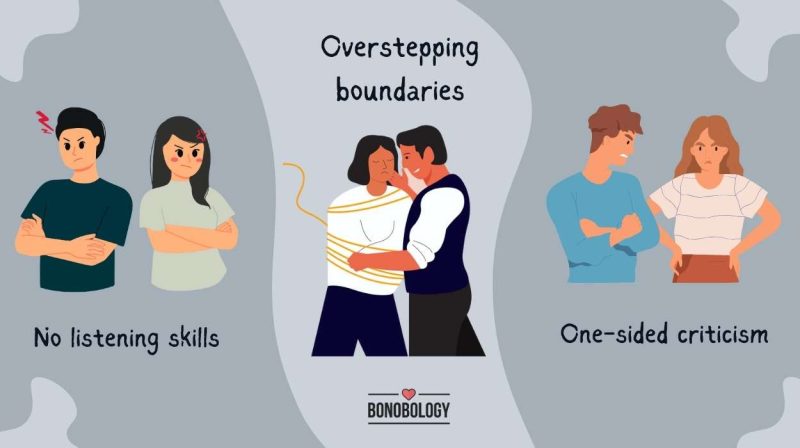
Featured
Signs A Guy Is Obsessed With You In A Bad Way: 15 Red Flags
Unintentional Love Bombing: 9 Ways You May Be Overwhelming Your Partner
13 Signs Of A Hot And Cold Relationship & How To Break The Pattern
21 Subtle Signs You’re Not Really In Love With Your Partner
I Hate My Girlfriend: Why You Feel This Way And What To Do
When Health Challenges Affect Your Relationship Dynamics
5 Harsh But True Signs He’ll Never Marry You
21 Signs That You Are Alone In A Relationship
11 Situationship Red Flags You Should Know About
Why Do I Get Attached So Easily? 9 Possible Reasons and Ways to Stop
How To Respond To DARVO: Expert Lists 7 Strategies
What Is Fexting, And Why Is It Bad For Your Relationship?
Are Narcissists Capable Of Love?
11 Prominent Male Narcissist Traits to Watch For
Why Does My Girlfriend Hit Me? Expert Shares 11 Possible Reasons And Ways To Cope
How Does A Narcissist React When They Can’t Control You?
“My Anxiety Is Ruining My Relationship”: 6 Ways It Does And 5 Ways To Manage It
13 Distinctive Traits Of Female Narcissists Revealed
Recognizing The 13 Red Flags Of A Controlling Relationship
What Are The Examples Of Narcissistic Behavior In A Relationship?